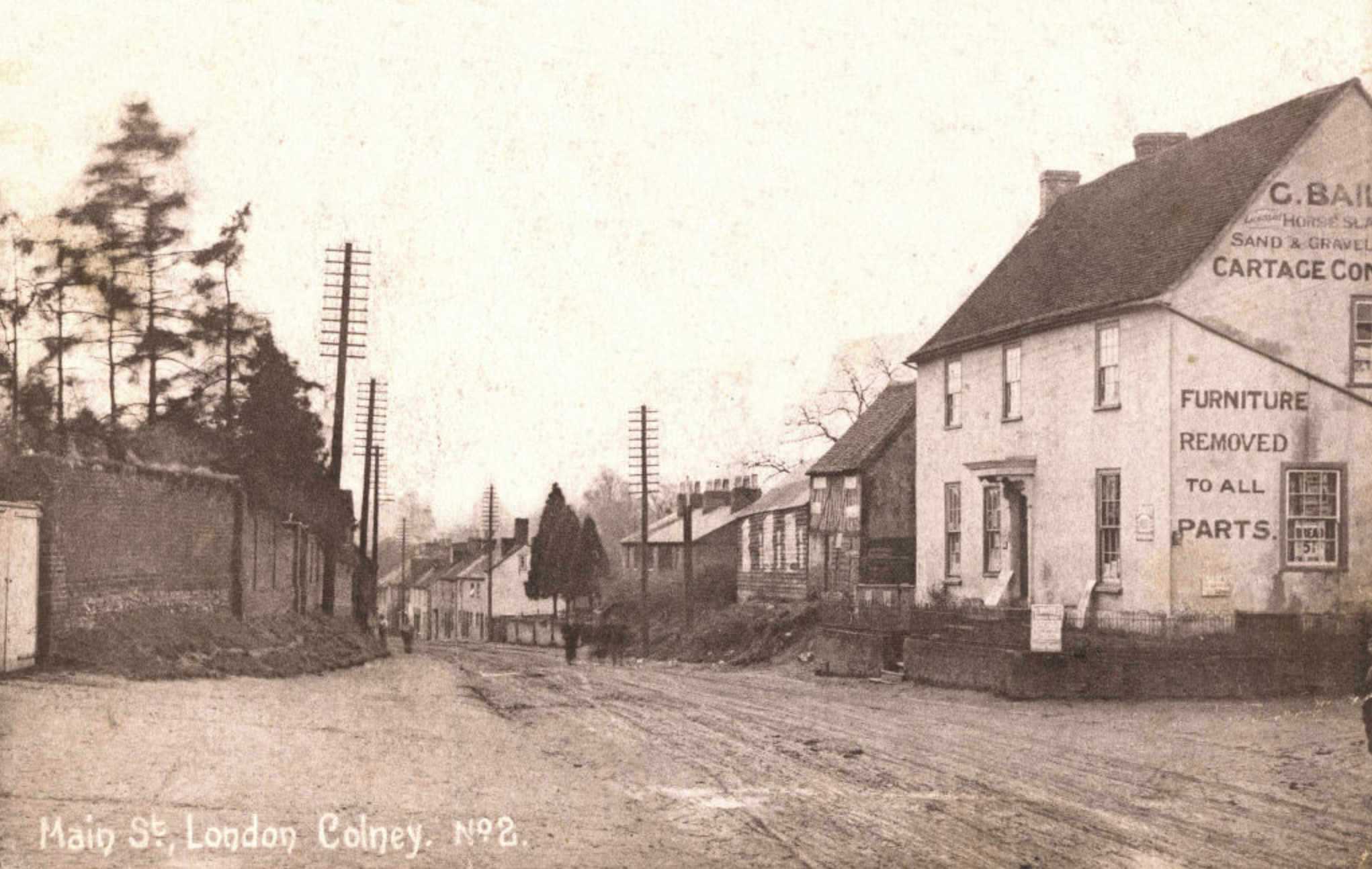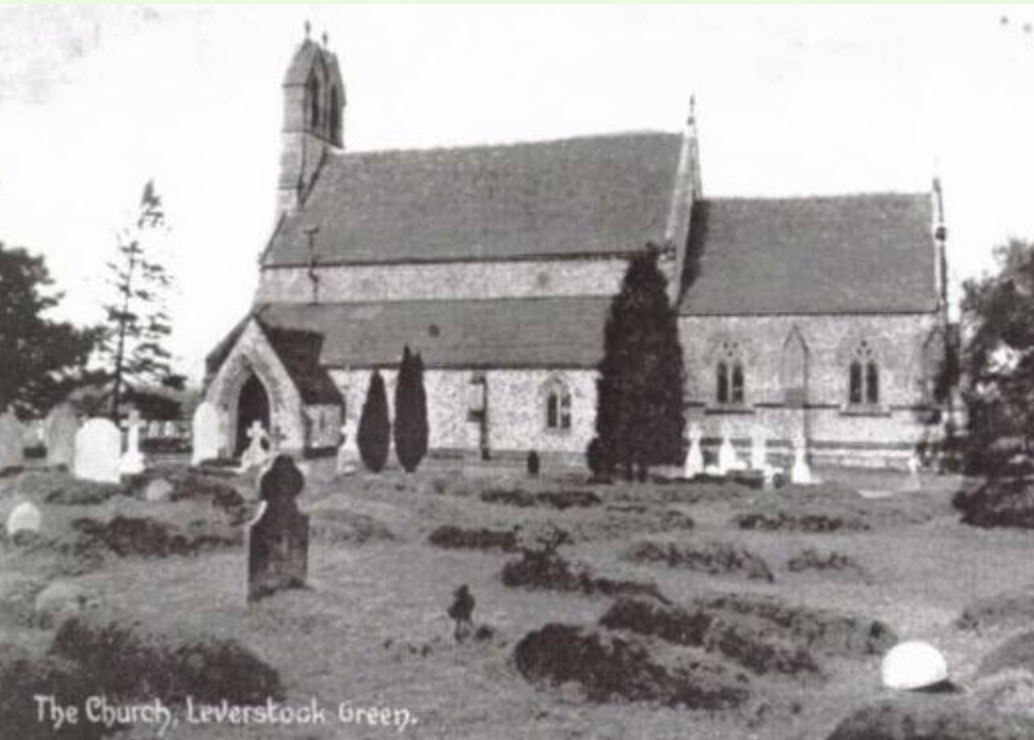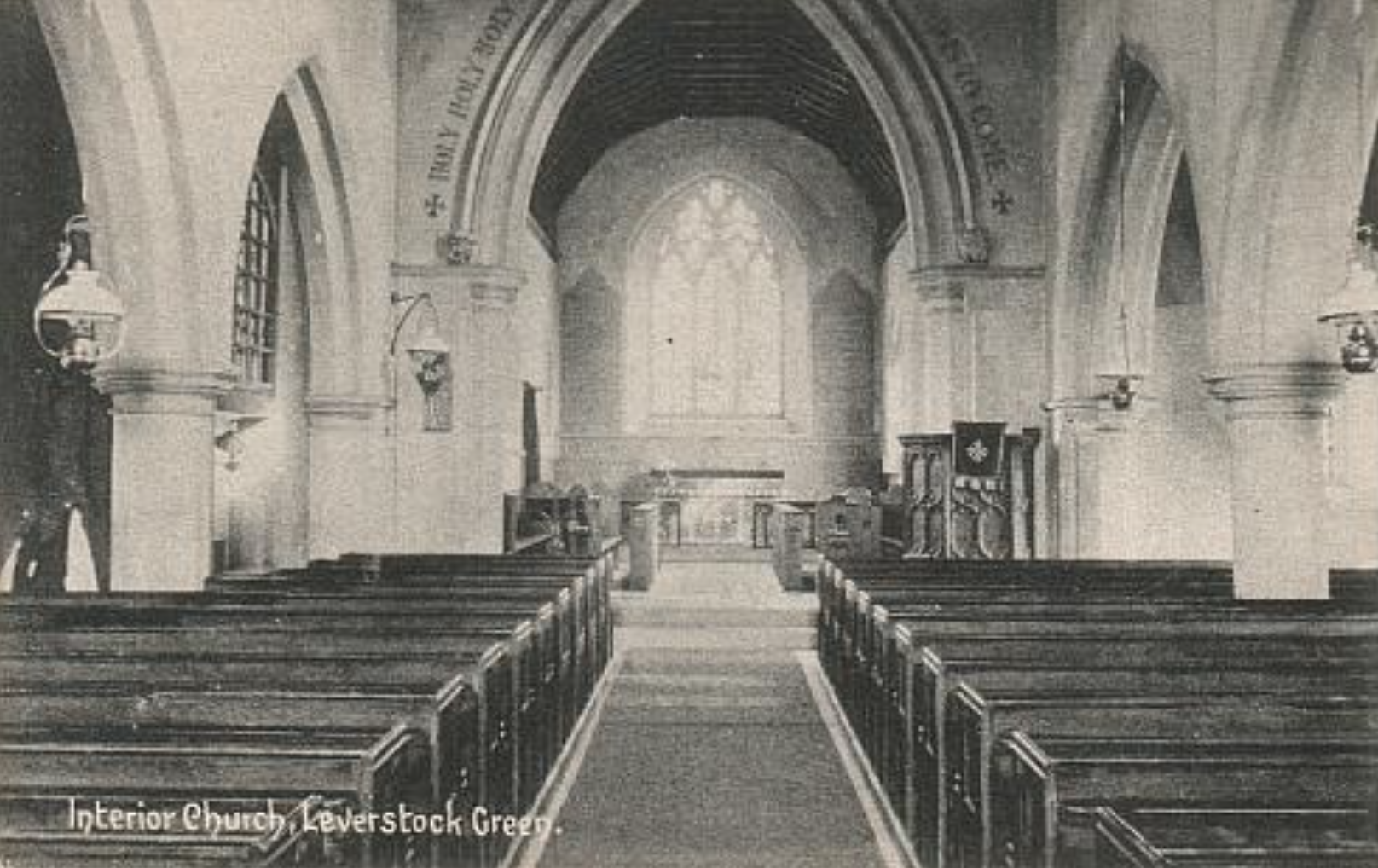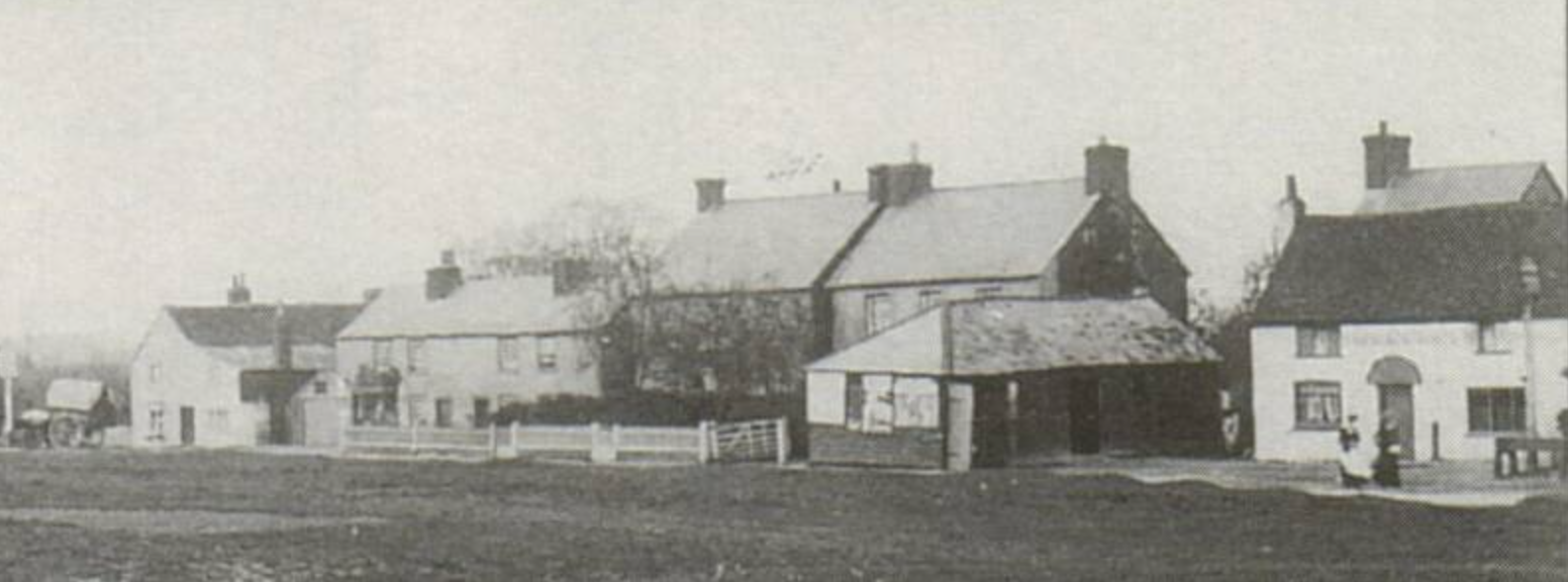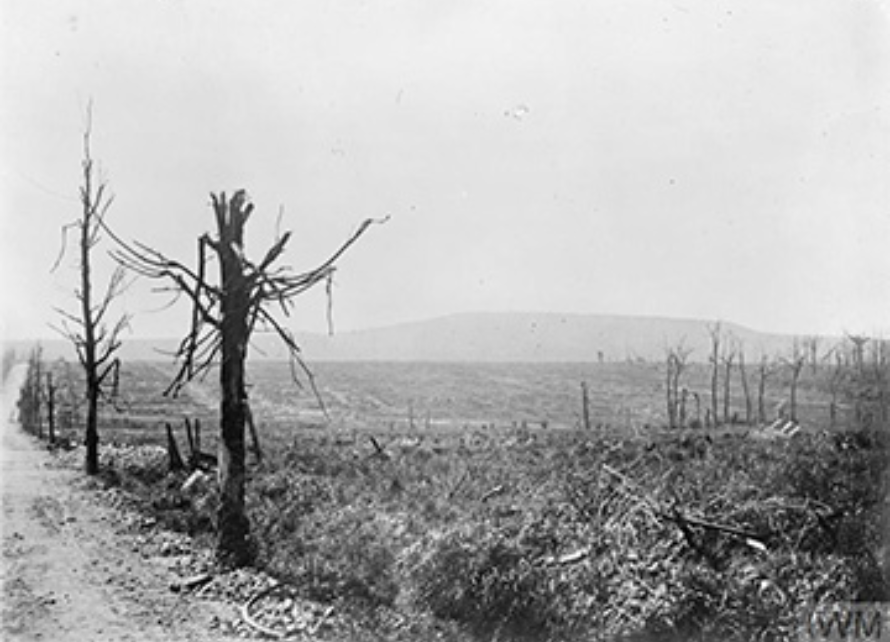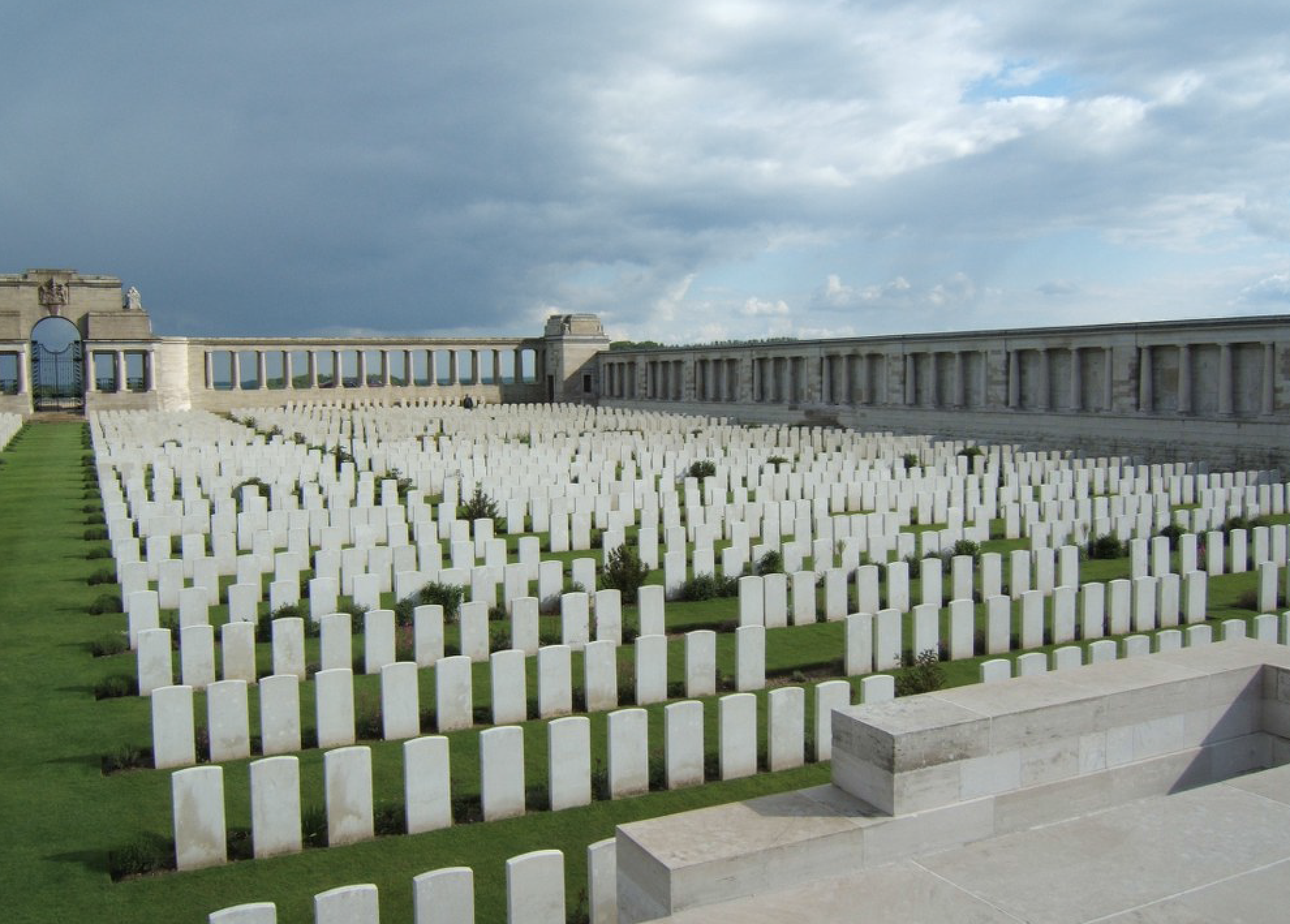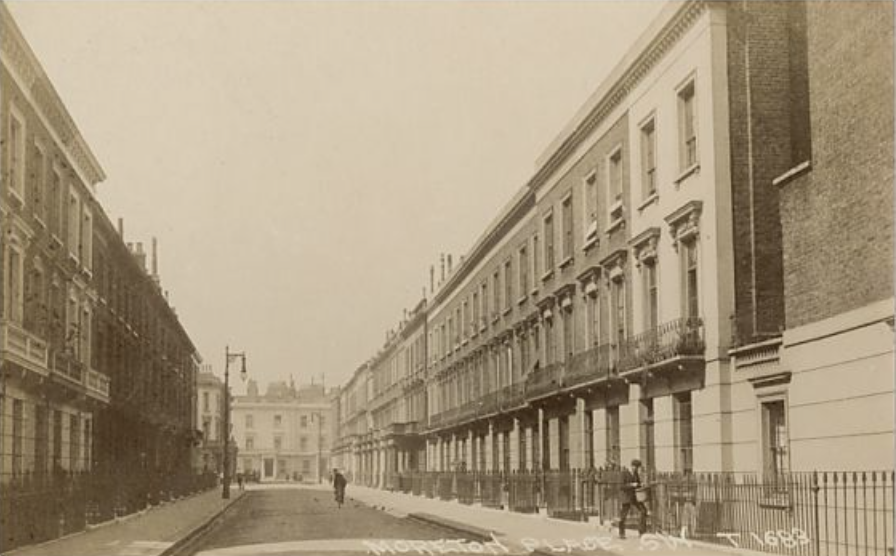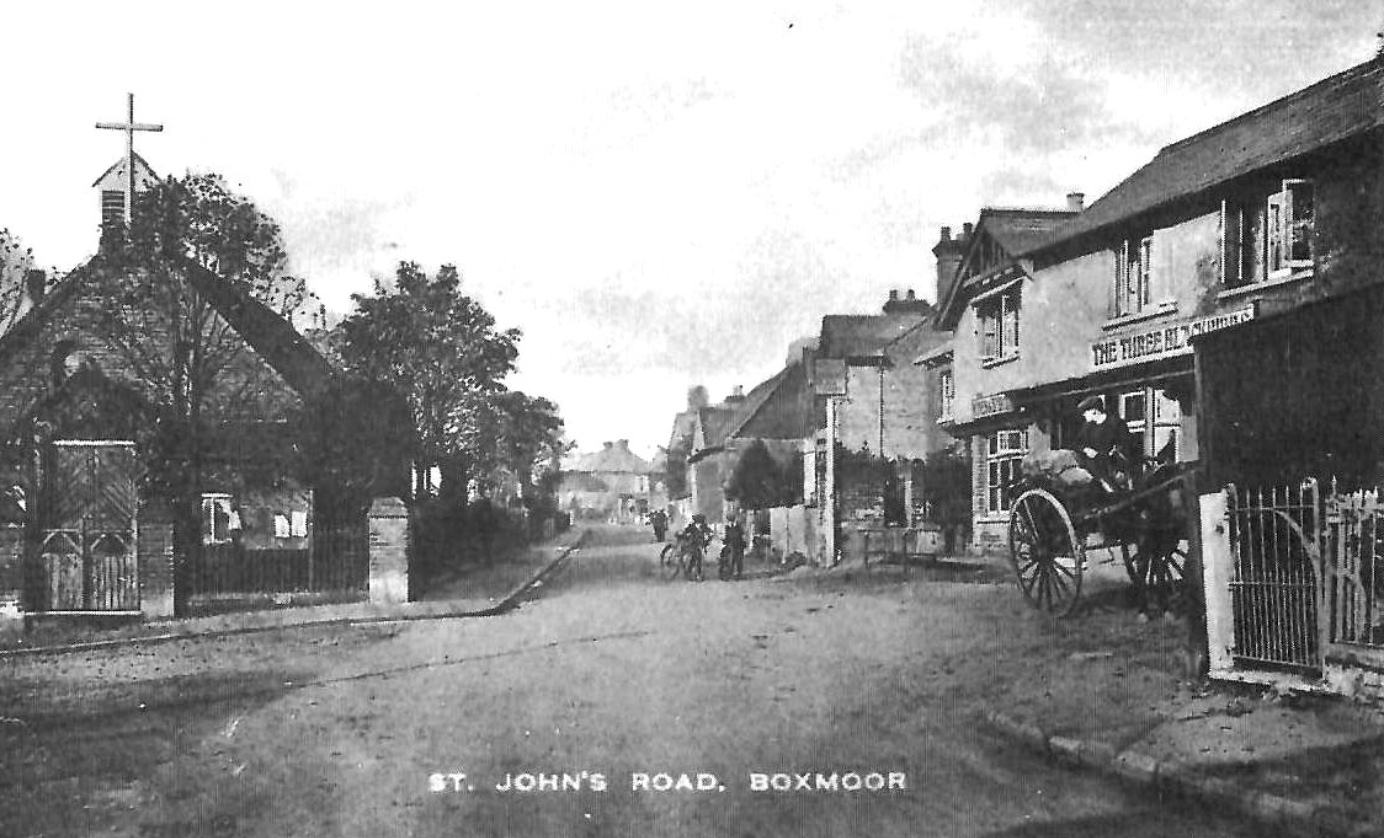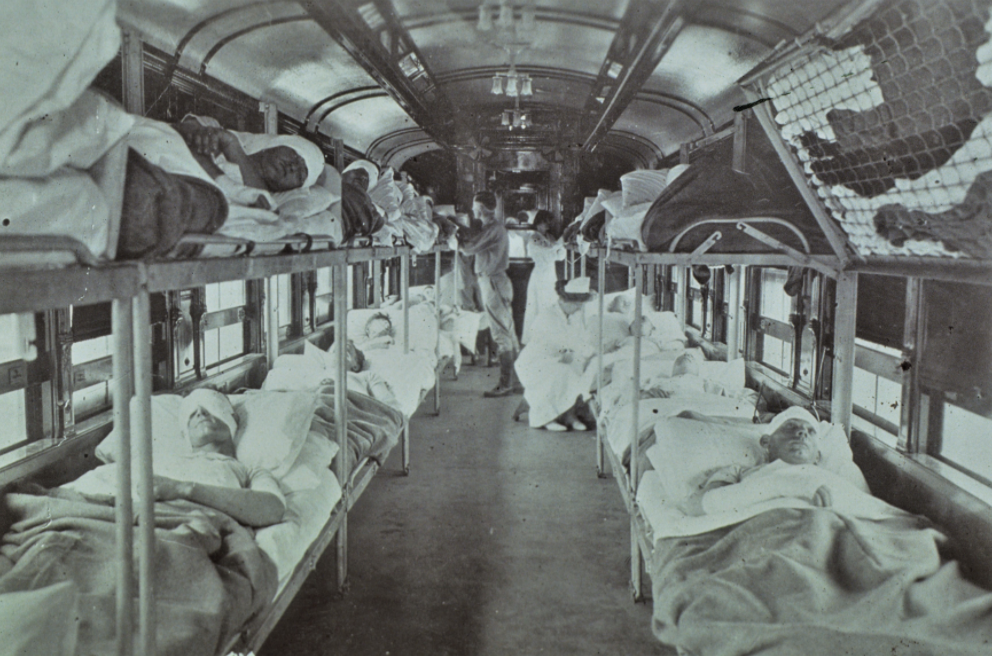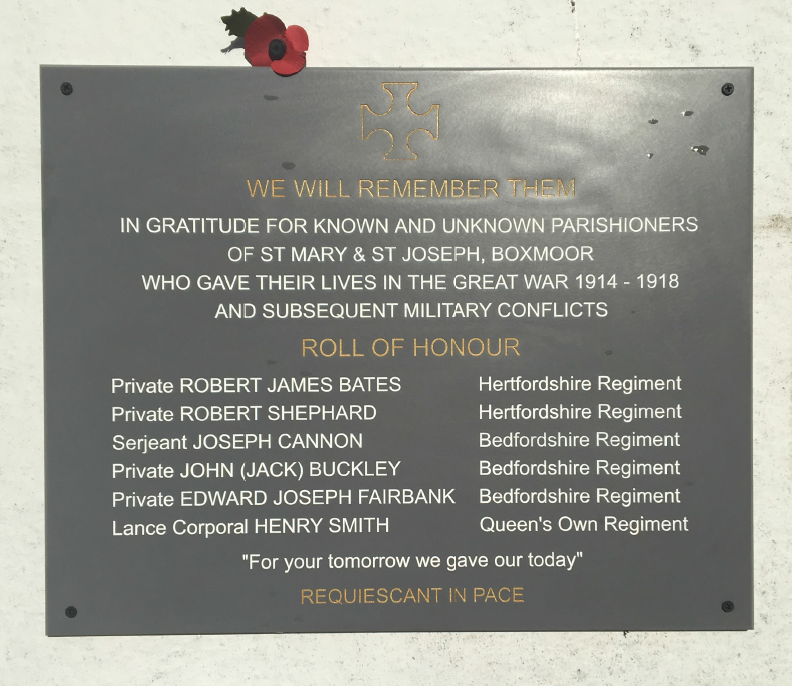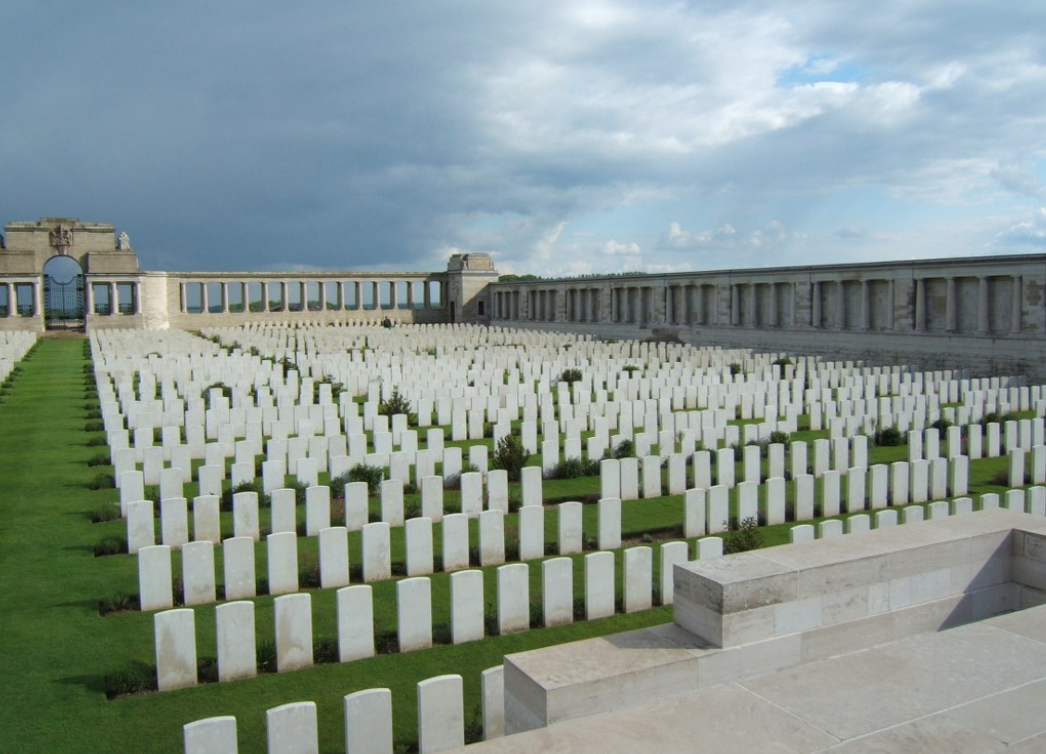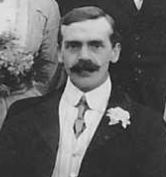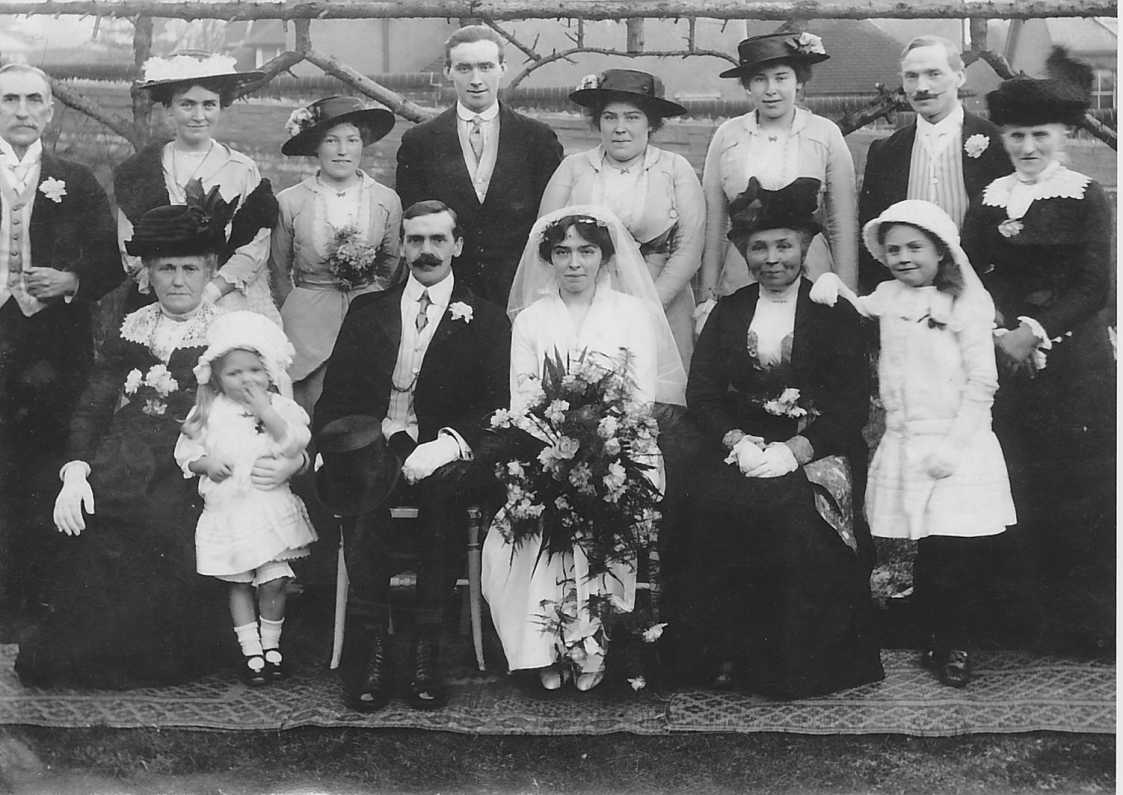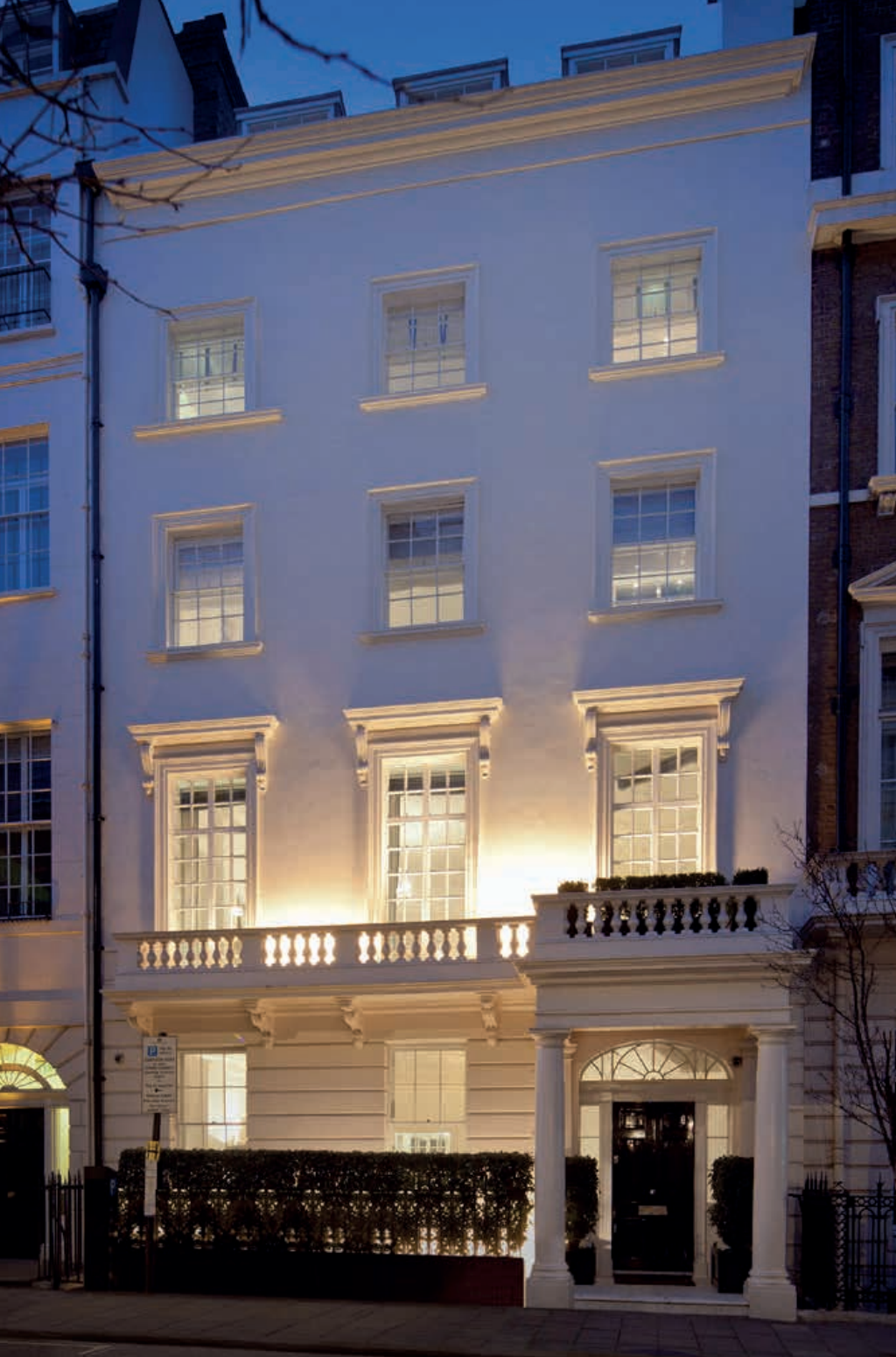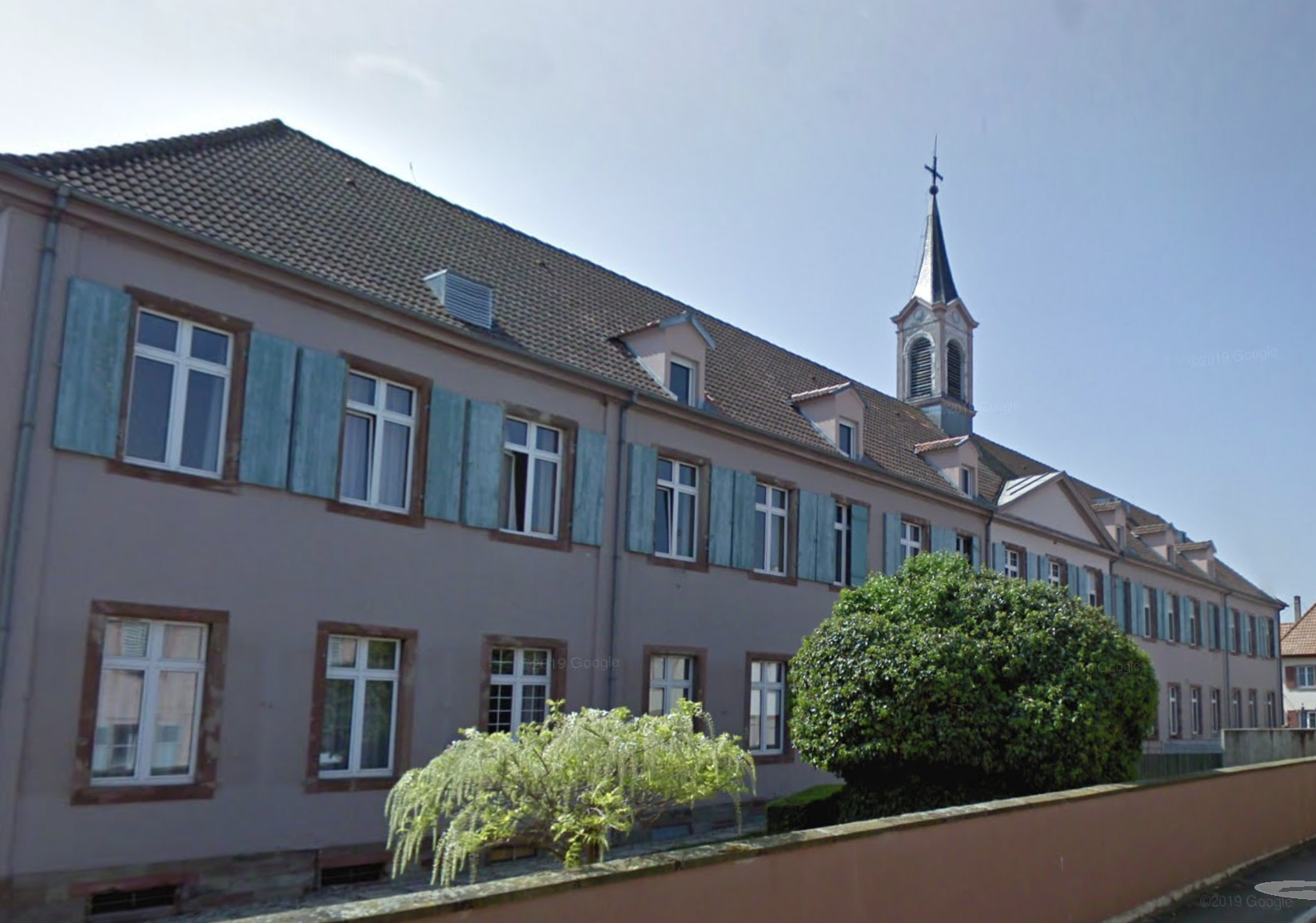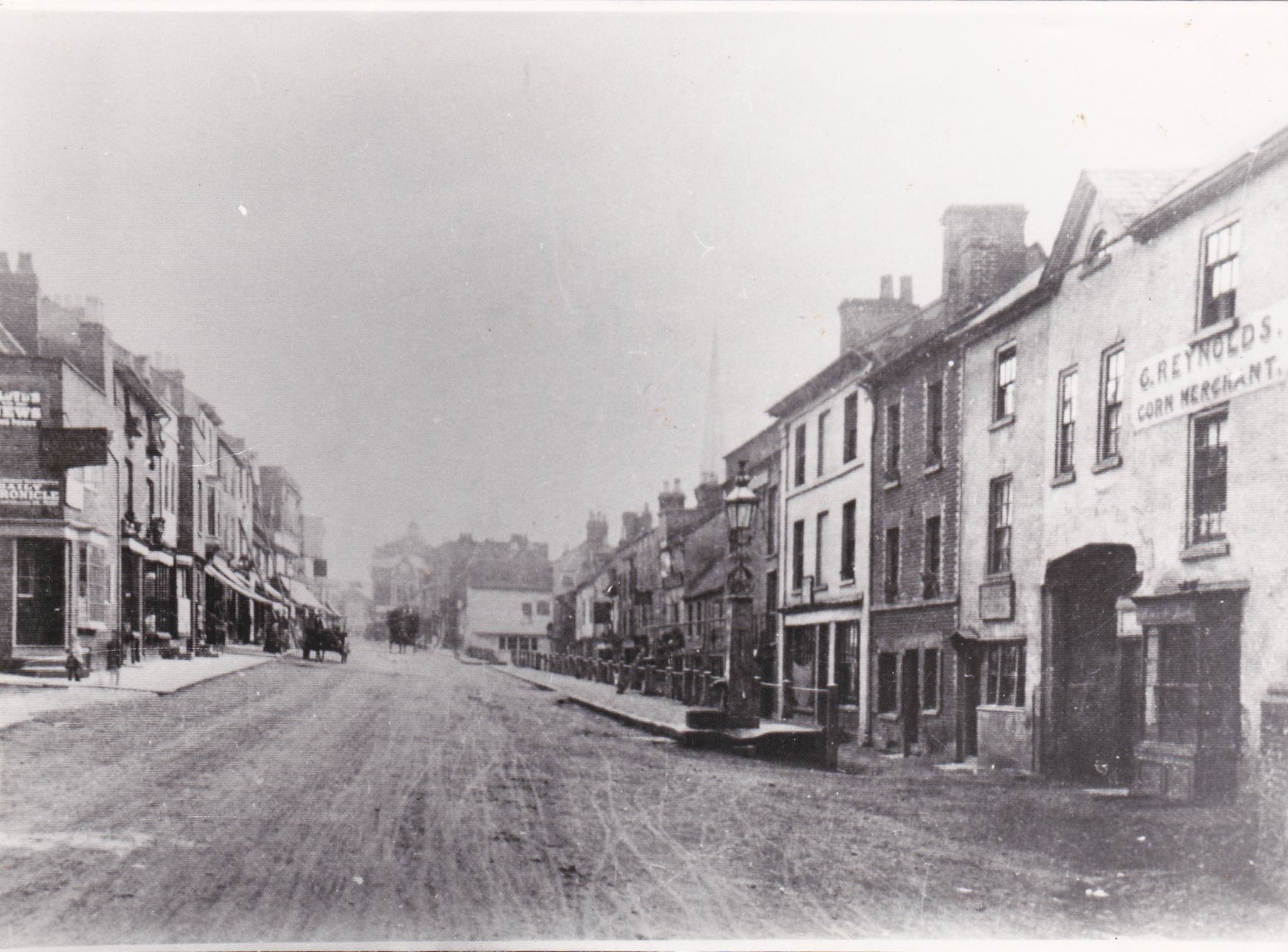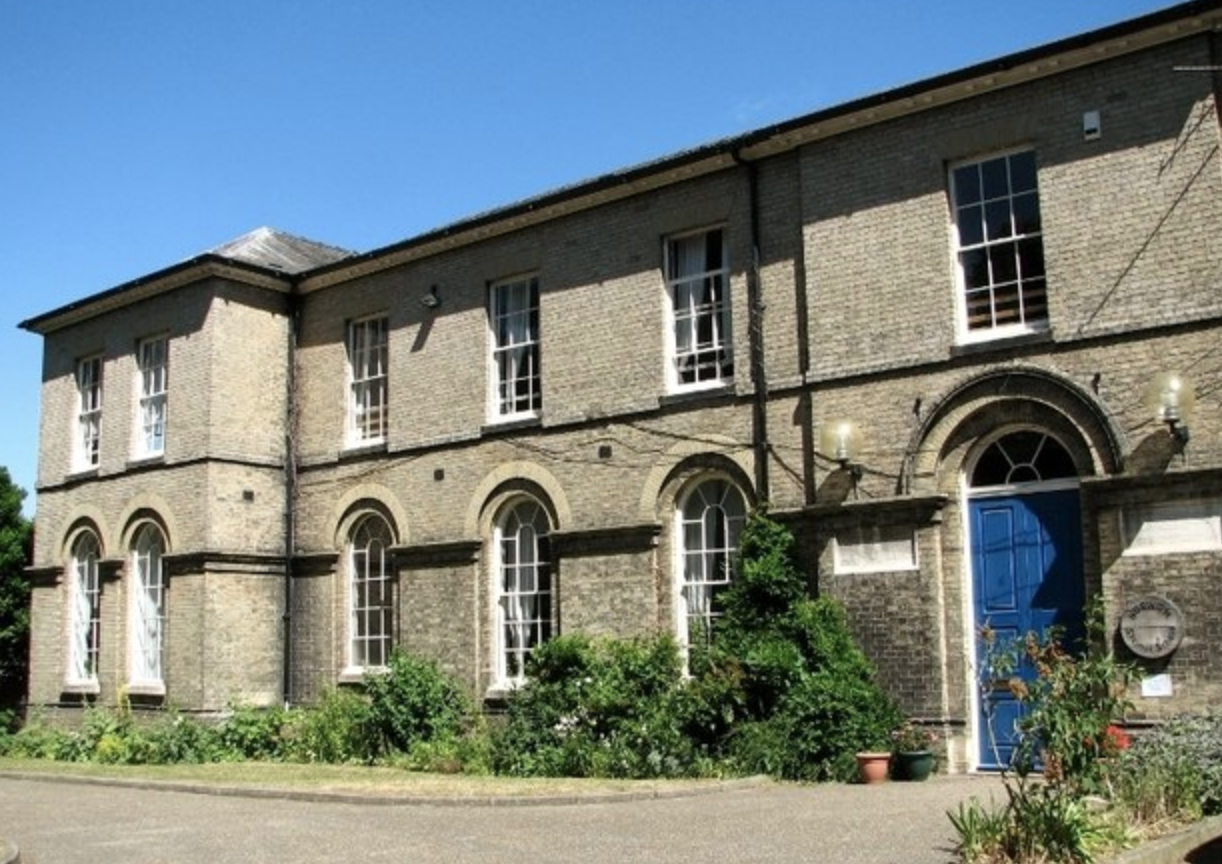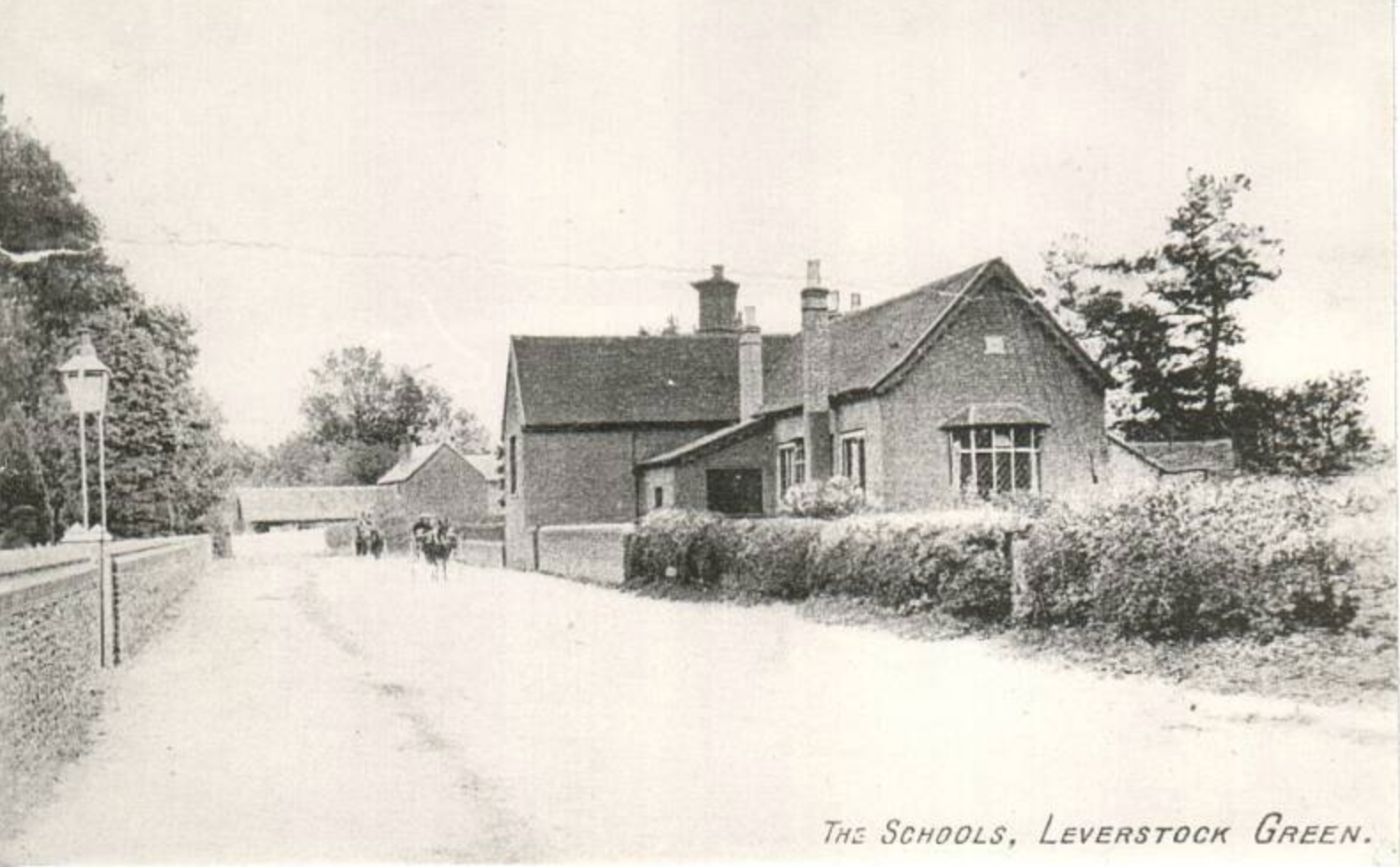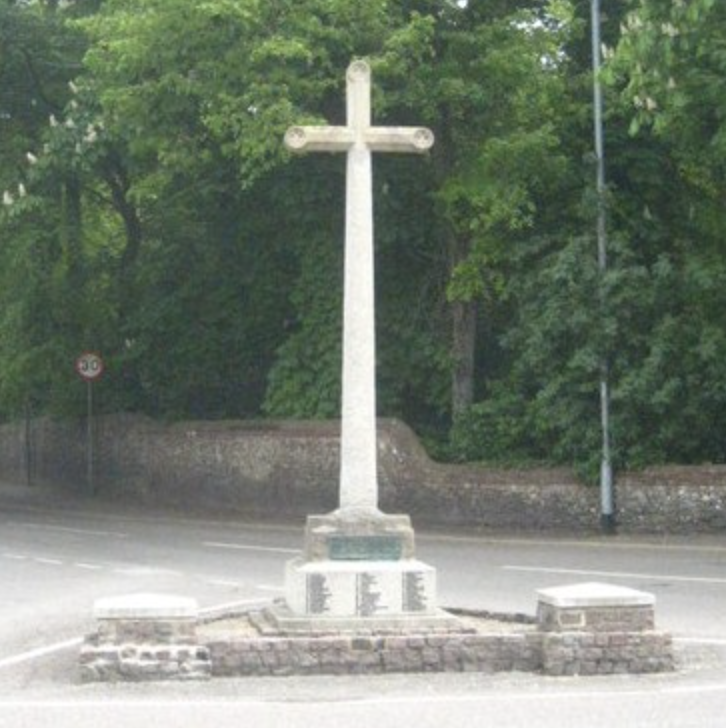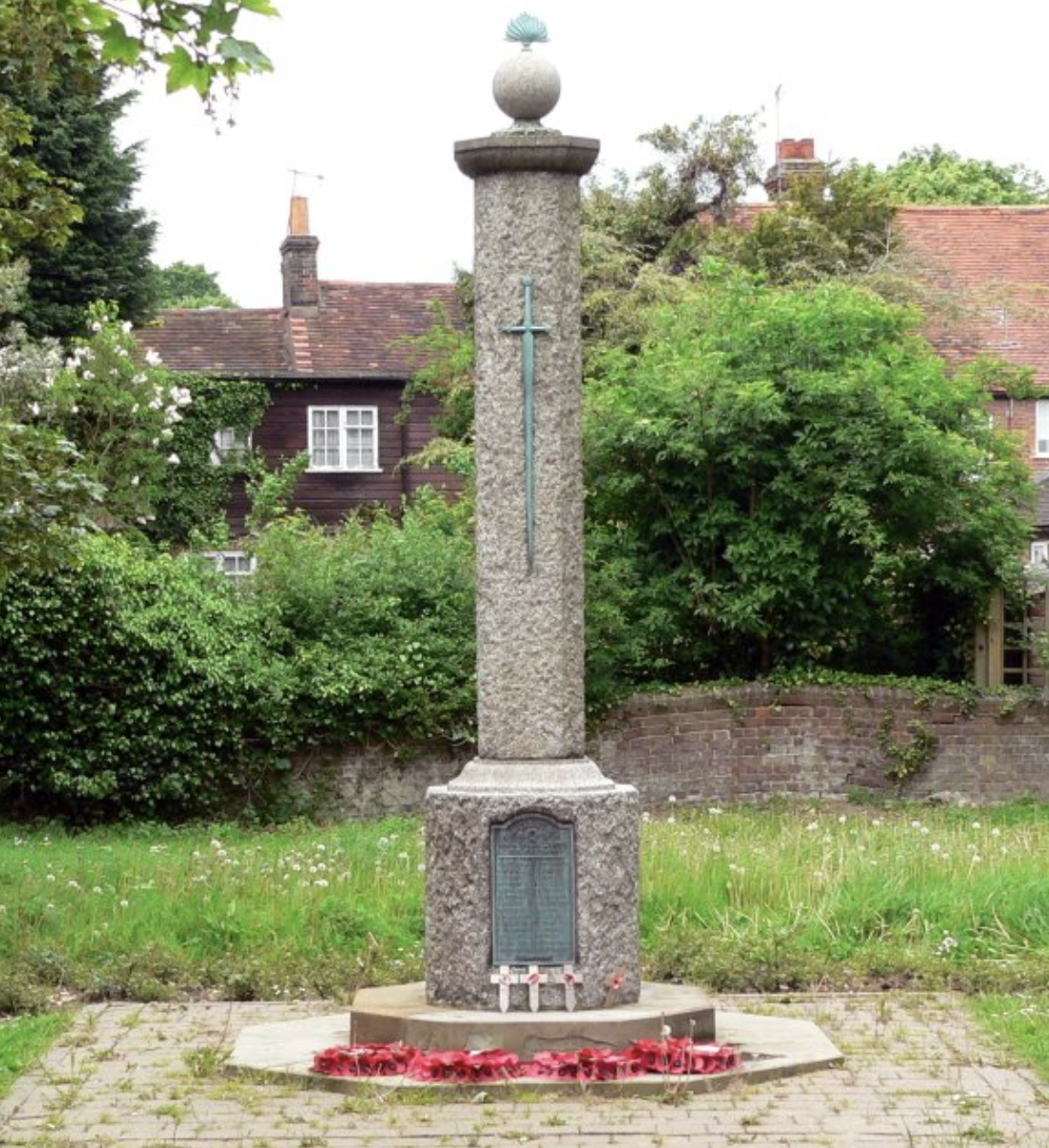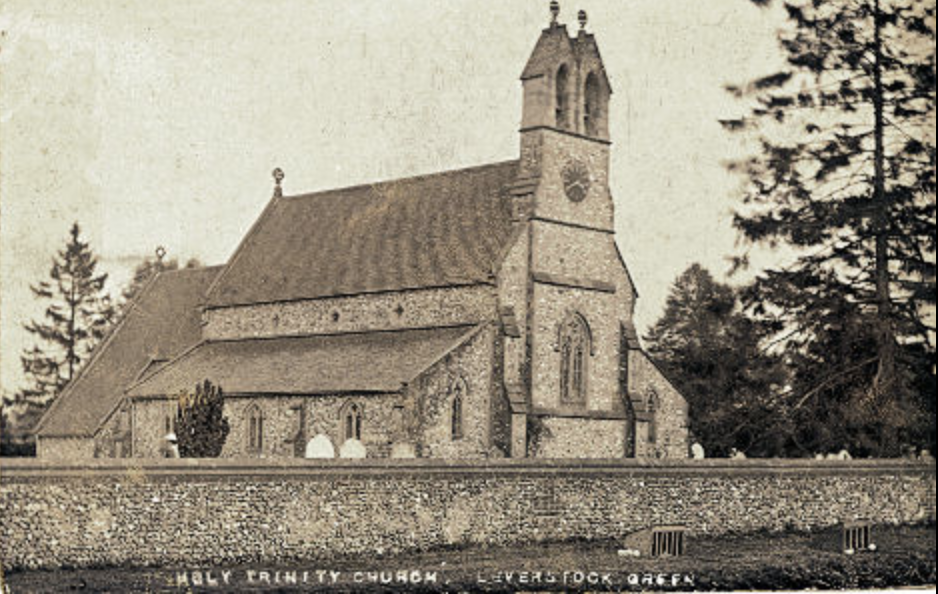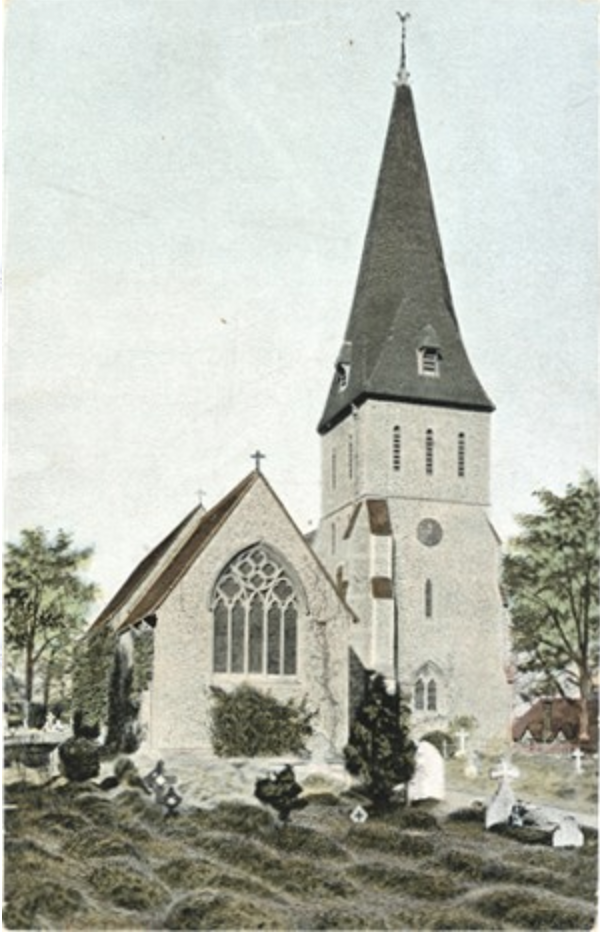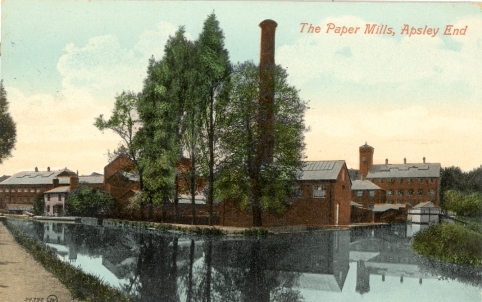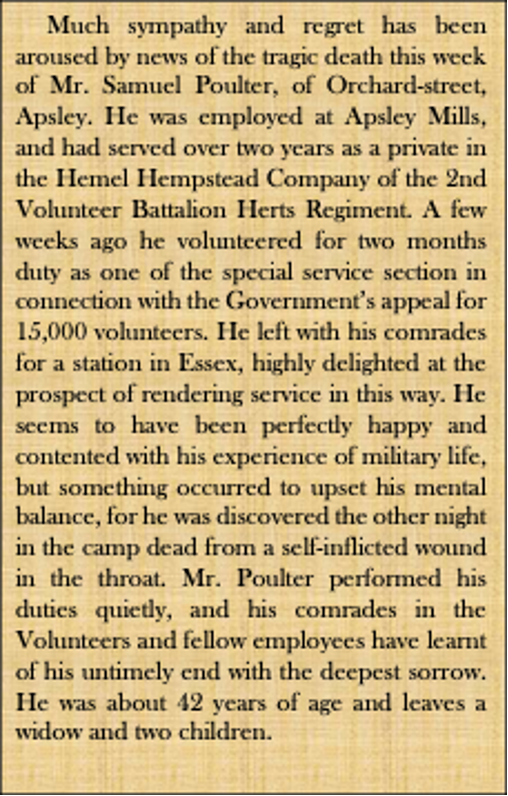Fallen in July 1918:
Thomas Childs
Joseph Edward Fairbank
Allen Alfred Gower
John Thomas Spurr
Henry Wombwell
Samuel Poulter
THOMAS CHILDS
30822 Private
2nd Bn., Bedfordshire Regiment
Killed in Action Tuesday, 1st July 1918
Remembered with Honour, Pozières Memorial, Somme, France, Panel 28 and 29
Thomas Childs was born in London Colney, Hertfordshire on Thursday, 8th February 1883 and baptised three months later on Sunday, 6th May. He was the second son and fourth child born to Thomas Childs and Hannah Kiff and he had seven siblings. His brothers and sisters were: Millicent, Edward, Rose all older, and Annie, Arthur, Harry and Frank.
His father Thomas took his young family to Radlett not long after Thomas was born, where he took up a new position as a Park Keeper at Newberries Park the site of an orphanage. When he was old enough Thomas went to school in Watford, first to Shenley Road School before moving to Beechen Grove Board School in Red Lion Yard in the town. The school was unusual in that it was next door to a public house, The Woodman’s Arms. He left school in 1895.
The family then moved to Leverstock Green, close to Hemel Hempstead, where Thomas senior had taken the lease on North End Farm in the village and where young Thomas would grow up. By 1901, Thomas and two of his brothers were working for their father on the farm and ten years later he had been joined by his two youngest brothers, Harry and Frank.
The farm was the venue in 1902 for the village's coronation celebrations as King Edward VIII ascended to the throne and Thomas Snr. advertised the fact in the Hemel Gazette as follows: "……..At 12.30 a dinner will be provided at Northend farm for men and boys over 13, Athletic sports commence at 2 pm, and a tea will be given to all inhabitants at 4. At 9.30 there will be a procession to the green and a bonfire will be lit at 10……” Little did they know that the farmhouse would itself become a "bonfire" when it burnt down some sixty years later.
On the outbreak of war Thomas and his brothers continued to work on their father’s farm as their jobs were "starred", similar to the reserved occupations of the Second World War. By this time Thomas had met Lizzie Pearce who lived in Rucklers Lane in nearby Kings Langley and they were sweethearts.
Thomas and Lizzie married on Saturday, 29th May 1915 in Holy Trinity Church a short distance from North End Farm in Leverstock Green. The couple set up home in Leather Bottle Terrace in the village and Thomas changed his job and became a Gardener. A year after their marriage their only child Reginald Thomas was born on the 16th May.
Thomas enlisted in August 1916 and joined the Bedfordshire Regiment and following a relatively brief period of training, went to France in early November of the same year. He was posted to the 2nd Battalion and joined his unit at the front on the 6th November at Berles-au-Bois near Arras.
In April 1917 Thomas saw his first serious action in the Battle of Arras at the First Battle of the Scarpe which he survived unscathed. June of the year saw him fight in the Battle of Messines Ridge before the 2nd Bedfords moved to Belgium and fought in the Battle of Pilckem Ridge, the opening engagement in the Battle of Ypres. This was the last significant engagement for the Battalion that year and during the remaining months, Thomas found himself training or supporting in reserve.
By March the following year, Thomas was back in France and fought in the Battle of St Quentin, the opening engagement of the 1918 Somme offensive. Thomas was fortunately not one of the 569 casualties suffered by the Bedfords in this battle.
The Battle of Kemmel followed in April and for the next few months Thomas was engaged in actions in the trenches. At the end of June he was near Albert and again engaged in active operations, when on the first day of July he was one of eight men killed in the trenches.
Thomas died on Tuesday, 1st July 1918.
Thomas is Remembered with Honour on the Pozières Memorial, Somme, France where his named is engraved on Panel 28 and 29.
He was 34 years old when he died.
Thomas was eligible for the British War Medal and the Allied Victory Medal.
London Colney where Thomas was born (Photo: http://www.hertfordshire-genealogy.co.uk)
Holy Trinity Church, Leverstock Green where Thomas and Lizzie married (Photos: https://bacchronicle.homestead.com)
The centre of the village where Thomas and Lizzie lived between the Leather Bottle on the right and The White Horse on the left. (Photo: https://bacchronicle.homestead.com)
Kemmel Hill, one of the many locations where Thomas fought (Photo: Imperial War Museum (Q 17859))
Pozières Memorial, Somme, France (Photo: CWGC)
EDWARD JOSEPH FAIRBANK
266422 Private
2nd Bn., Bedfordshire Regiment
Killed in Action Tuesday, 1st July 1918
Remembered with Honour, Pozières Memorial, Somme, France, Panel 89 to 90
Edward Joseph Fairbank was born on Moreton Place, Pimlico, Westminster, London on Wednesday, 10th March 1897 and baptised at Sacred Heart Roman Catholic Church on Horseferry Road a month later on Sunday, 18th April. His parents were Edward James Fairbank and Alice Ruth Thorn who had four other children besides Edward and those were: Frederick James Bernard, Albert Joseph, Winifred Helena and Philip George.
When Edward was born his father worked as a Domestic Butler, but tragically, he died suddenly just before the birth of the youngest child Philip in 1899 and when Edward was only two-years-old. The second child Albert had died at birth in 1892, and before Edward went to war further sad deaths occurred in the family. His younger brother Philip died in 1907 when he was just eight-years-old and his sister Winifred passed away in 1913 aged twenty.
On the death of his father, Edward’s mother Alice brought her youngest boy Philip to Wigginton near Tring close to her parents home. The other three children however, remained in London with their paternal grandparents in West Hampstead and from there Frederick, Winifred and Edward started school.
Edward entered St Catherine’s School in 1902 where he remained until he came to Hemel Hempstead to join his mother in the summer of 1910. By this time Alice had acquired a Stationery and Tobacconist business and traded from premises at 49 St John’s Road in Boxmoor. Edward went straight into Boxmoor JMI and completed his education in March 1912. He then joined his mother in her business and began his working life.
On the outbreak of war, he was too young at seventeen to volunteer, but shortly before he reached the age of eighteen in January 1915, he went to Hertford and enlisted with the Hertfordshire Regiment. He presented himself as older than his years, because only six months after his enlistment he was sent to France. At that time a recruit had to be nineteen before going overseas, but many young men falsified their age in their enthusiasm to serve and fight and Edward was one who did so.
He had been posted to the 1/1st Hertfordshire Regiment, known as the "Hertfordshire Guards" and he disembarked in France on the 17th August 1915, going initially to a base camp at Rouen. The "Guards" had been in France with the 4th Guards Brigade since November of the previous year and in late October, Edward joined his unit at Beuvry close to Bethune.
Within days he saw action in the trenches, but it was to be a full year before he experienced the true horror of battle, when in October 1916, he fought in the Battle of Ancre Heights. This was followed in November by the Battle of Ancre, the last battle of the Somme campaign and thankfully Edward came through unscathed.
At the end of July 1917, he fought in the opening engagement of the Battle of Ypres at Pilckem Ridge and again survived. During the next three months, Edward fought through the Ypres campaign at Langemark, Menin Road and Polygon Wood, before experiencing the horrors of the Second Battle of Passchendaele in late October. It was shortly after this that his good fortune deserted him when between the 1st and 3rd November Edward was one of five men gassed in the trenches and he was immediately taken down the line to 31 Ambulance Train for treatment.
The gassing resulted in a long period of recuperation for Edward and he was sent back to England, first to hospital and then a convalescent camp, where he remained until well enough to go back to France. He went overseas again on the 6th May 1918 and was now posted to the 2nd Battalion Bedfordshire Regiment which he joined on the 23rd of the month at Mirvaux near Amiens.
He was soon back in the trenches and at the end of June, his unit was on active operations northwest of Albert. The Battalion War Diaries recorded that over the first two days of July it suffered numerous casualties when some 105 men were Killed, Missing or Wounded.
Sadly Edward was amongst the men who died when a German shell hit his part of the trench and he was killed instantly.
Edward died on Tuesday, 1st July 1918.
His mother Alice had now lost her husband and all but one of her children and she and her oldest son Fred, continued with their business on St John’s Road until her retirement. Alice died in Dudswell, Northchurch in February 1958 aged ninety-two and she was buried in Kingshill cemetery in Berkhamsted.
Edward’s death was reported in the Hemel Gazette a month after he was killed. (see extract)
The memorial at St Mary and St Joseph church in Boxmoor commemorates Edward who was a member of the congregation.
Edward is Remembered with Honour on the Pozières Memorial, Somme, France where his named is engraved on Panel 89 to 90.
He was 21 years old when he died.
Edward was eligible for the 1914-15 Star, the British War Medal and the Allied Victory Medal.
Moreton Place, Pimlico where Edward was born (Photo: Public Domain)
St. John's Road, Boxmoor where Edward's mother had her shop. St. Mary and St. Joseph Church on the left (Photo: https://boxmoorgoodneighbours.org.uk)
The aftermath of the Battle of Ancre Heights where Edward saw his first serious action (Photo: © Image IWM (Q 1558))
An ambulance train in WW1 (Photo: https://www.worldwar1centennial.org)
Extract from The Hertfordshire, Hemel Hempstead Gazette and West Herts Advertiser 3rd Aug. 1918
St Mary and St Joseph Church Memorial (Photo: Traquair Photography)
Pozières Memorial, Somme, France (Photo: CWGC)
ALLAN ALFRED GOWER
204388 Private
1st Bn., London Regiment (Royal Fusiliers)
Died of Wounds Wednesday, 2nd July 1918
Remembered with Honour, Neuf-Brisach Communal Cemetery Extension, Haut-Rhin, France, Grave VII. 23.
Allan Alfred Gower was born in the autumn of 1886 in Hemel Hempstead and baptised on Friday, 31st December at St Paul’s Church in the same year. He was the second son and youngest child of Alfred Gower and Mary Henderson, and his siblings were Alfred Alexander and Gertrude Mary.
His mother Mary was from Glencoe, Argyllshire in Scotland and it seems she may have named Allan for his uncle who lived with the family and worked as a "Mercantile Clerk" for the County Council, and later the local Gas Company.
His father Alfred was a "Carter" and the family lived on Bury Road in Hemel Hempstead where the three children grew up. When he left school Allan was apprenticed to a local baker, but he soon left this trade, and went to work with John Dickinson & Co Limited in Apsley Mills as a "Vellum Binder", where he remained until he went to war.
Allan married Hannah Louisa Longstaff on Thursday, 24th December 1914 in St Mary’s Church, Hemel Hempstead. His Uncle Allan Henderson was best man and the witnesses were his sister Gertrude along with Hannah’s sisters, Eliza and Elizabeth Ann and her brother Arthur.
It is not known how the couple met but, Hannah was born in Hatfield, Hertfordshire and went into domestic service when she left school. When she and Alfred married, Hannah was working as a "Housemaid" and living at 20 Upper Brook Street, Mayfair in London, where she was amongst nine servants in the household of one Mrs Mary McEwan. (The house sold in 2015 for £36m!)
Allan enlisted under the Military Services Act in May 1915 and joined the Royal Fusiliers (City of London) Regiment as a Bandsman and was immediately sent to Dover for basic training. He was initially posted to the 4th Battalion but, when he went overseas on the 5th March 1917, he transferred to the 1st Battalion.
Within a month of his arrival, Allan fought in the Second Battle of the Ainse before fighting and surviving at Messines, Ypres and Passchendaele, La Malmaison and finally Cambrai at the end of the year.
In March 1918 the German Spring Offensive was launched and the Battalion War Diaries recorded, that on the 21st March, it suffered “many casualties in the ranks”. Unfortunately, Allan was amongst these men and it was later confirmed that he had been taken prisoner and transported to a POW camp in Neubrisach (now Neuf-Brisach) in Alsace, part of Germany at that time.
He was unscathed when captured and remained a prisoner for just over three months, until he was moved to the Fortress Hospital in Neubrisach where, sadly he died as a result of dysentery. This was not uncommon amongst prisoners of war due to the poor hygiene conditions in the camps and the already weakened state of fighting men.
Allan died on Wednesday, 2nd July 1918.
His death was not confirmed to the British authorities until the 8th March 1919 and confirmed to Hannah in July, a year after he died. Following Allan’s death, Hannah went to the USA with her employer in her new capacity as a "Nursemaid". She remained there until 1959 when, after retiring, she returned to Hemel Hempstead. She died at the Arden Nursing Home, Hunton Bridge, Hertfordshire in 1976 aged ninety-two.
Allan was commemorated on the John Dickinson & Co Limited War Memorial at Apsley End.
He was also commemorated on the memorial plaque in St John the Evangelist church in Boxmoor.
Allan is Remembered with Honour on the Neuf-Brisach Communal Cemetery Extension, Haut-Rhin, France, where he is interred in Grave VII. 23.
He was 32 years old when he died.
Allan was eligible for the British War Medal and the Allied Victory Medal.
Allan Alfred Gower on his wedding day in 1914 (Photo courtesy: Richard Gower)
Allan and Hannah’s wedding party (Photo courtesy: Richard Gower)
20, Upper Brook Street, Mayfair where Hannah had been a housemaid (Photo: Traquair Photography)
Hopital Rurale de Neuf-Brisach "Fortress Hospital where Allan died in 1918 (Photo: https://www.google.co.uk/)
Neuf-Brisach Communal Cemetery Extension, Haut-Rhin, France (Courtesy: © Conrad Freeling)
JOHN THOMAS SPURR
85806 Private
29th Bn., Middlesex Regiment
Died of Illness, Wednesday, 17th July 1918
Remembered with Honour, Heath Lane Cemetery, Hemel Hempstead, Herts, England, Grave B. 49.
John Thomas Spurr was born in Hemel Hempstead, Hertfordshire in January 1888 and baptised a month later on Friday, 10th February in St Paul’s Church on Queen Sreet. He was born to George Spurr and Sarah Ann Shepherd who had nine children together. They were: William, George, Albert, John Thomas, Arthur, Alice Louisa, Annie and Walter. Arthur died when he was eight months old in 1891 and Annie died aged fourteen months in 1898. Another unknown child died in infancy.
Two of John’s brothers also lost their lives in
the Great War, Albert in October 1917 and George in November only three weeks later. Their biographies also appear on this site.
The Spurr family lived on Cherry Bounce, Hemel Hempstead for over thirty years, before moving into 86 High Street just around the corner by the end of the war. When John started his education in 1893, he went to nearby Queen Street School and completed his time there in 1906. He went to work as a "Millhand" in G.B. Kent & Sons brush factory in Apsley.
By the time war broke out, John had left Kents and was working as a "Stoker" somewhere in Hemel Hempstead, a fact recorded on his Army Service Record when he joined the Colours.
John went to Watford to attest on the 27th March 1917 and joined the Middlesex Regiment and was posted to the 5th Labour Company and sent for basic training.
On enlistment, his medical examination records his physical development as "poor" and having foot problems, although he was passed fit for military service. However, only three months after his enlistment he was struck down by measles and immediately admitted to hospital where he spent twenty-eight days in recovery.
A year later, John suffered a fall from a lorry, which resulted in his admission to Lakenham Military Hospital in Norwich. The military hospital was in fact based in the Steiner School which reverted to an educational establishment after the war.
He was diagnosed as suffering from acute peritonitis brought on by the severity of the injuries sustained in the fall. After four days in hospital however, his condition was reassessed and he was then diagnosed with pulmonary tuberculosis, which was in all probability, tuberculosis peritonitis. Sadly, only two days later, John succumbed to his illness.
He died of his illness on Wednesday, 17th June 1918.
John was brought home to Hemel Hempstead by his family and he was buried on Thursday, 25th July 1918.
John is Remembered with Honour in Heath Lane Cemetery, Hemel Hempstead, Herts, England where he is interred in Grave B. 49.
He was 30 years old when he died.
John was eligible for the British War Medal and the Allied Victory Medal.
L. Cherry Bounce and R. High Street where the Spurr family lived for amny years (Photos: Barbara Norman and http://www.dacorumheritage.org.uk/)
G. B Kent & Sons Ltd., where John first went to work (Photo: https://kentbrushes.com)
The Steiner School, Norwich, Lakenham Military Hospital where John died (Photo: https://www.geograph.org.uk/photo/5816088)
John Spurr’s Grave, Heath Lane Cemetery, Hemel Hempstead, Herts, England (Photo: Traquair Photography)
HERBERT WOMBWELL
133310 Private
51st Heavy Bde., Machine Gun Corps (Infantry)
Died of Wounds, Sunday, 21st July 1918
Remembered with Honour, Terlincthun British Cemetery, Wimille, Pas-de-Calais, France, Grave XVII. B. 6.
Herbert Wombwell was born at Thriplow, Cambridgeshire in early 1899, the third child of Eli Wombwell and Elizabeth Sarah Briggs, of Rectory Farm, Fulbourn, Cambridgeshire. Herbert’s siblings were his half-brother, Henry George Briggs, then Bertha, Walter, Florence, Albert Lewis, Lewis Eli and Eleanor Emma. Herbert’s brother Walter also served in the Great War with the Royal Garrison Artillery and survived the conflict.
In 1910, Herbert’s father Eli brought the family to High Wood Hall Farm in Leverstock Green, Hertfordshire where he had obtained a position as “Farm Foreman”. Herbert along with his three younger siblings attended the local village school and it was there that he completed his education in 1913. It is not known where Herbert went to work when he left school, although in all likelihood, he joined his father and older brothers on the farm.
On the outbreak of war, he was still too young to enlist, but as soon as he reached his eighteenth birthday he volunteered for service. He travelled to Watford in May where he attested and joined the Army and was immediately sent for basic training. He was posted to the Machine Gun Corps (MGC) for specialist training and was finally sent overseas in February 1918 to join the 51st Battalion, MGC.
The 51st was under the orders of the 51st Highland Division and shortly after arriving, Herbert fought in the Battles of St Quentin and Bapaume, early phases of the Battle of the Somme (1918). The Battles of Estaires and Hazebrouck followed in April.
By the 19th July 1918, the 51st Battalion was positioned in the vicinity of Epernay, the centre of champagne country, when orders were received to attack on the following morning. At 8 a.m. the next day the 51st Highland Division went into action with the 62nd Division on its right flank and the 9th French Division on its left. Progress to the objective was steady and as the Battalion War Diaries recorded the “Advance carried on by peaceful penetration.”
The action was not without casualties however, and between the 20th and 31st July a total of 174 men were killed, wounded or posted missing. Of this number three died of wounds and sadly Herbert was one of these men. He received his injuries early in the attack and was taken down the line to a Casualty Clearing Station, but nothing could be done for him.
Herbert died of his wounds on Sunday, 21st July 1918.
He was commemorated on a number of memorials following his death. His parents Eli and Elizabeth moved back to the village of Sawston, Cambridgeshire, not far from Thriplow where Herbert had been born, and they ensured his name was recorded on the village war memorial in Sawston.
He was recorded on the Leverstock Green War Memorial as well as in the village school, and finally, he was named on the very fine War Memorial Plaque in Marlowes (Carey) Baptist Church in Hemel Hempstead.
Herbert is Remembered with Honour in the Terlincthun British Cemetery, Wimille, Pas-de-Calais, France, where he is interred in Grave XVII. B. 6. The inscription on his headstone, requested by his father Eli, reads: “SLEEP AND REST WE LOVE YOU WELL BUT JESUS LOVES YOU BEST”.
He was only 19 years old when he died.
Herbert was eligible for the British War Medal and the Allied Victory Medal.
The Post Office on Middle Street, Thriplow, the street where Herbert was born (Photo: https://www.ebay.co.uk)
Leverstock Green School where Herbert received his education (Photo: http://www.lgchronicle.net)
King George V inspecting the 51st (H) Battalion, Machine Gun Photo: © IWM Q 317Corps https://www.iwm.org.uk)
R. Sawston and L. Leverstock Green War Memorials (Photos: Traquair Photography)
Terlincthun British Cemetery, Wimille, Pas-de-Calais, France (Photo: CWGC)
SAMUEL POULTER
V/44572 Private
Hertfordshire Regiment
Died, Tuesday, 23rd July 1918
Remembered with Honour, Apsley End (St Mary) Churchyard, United Kingdom, North Part
Samuel Poulter was born in early Summer 1876 at Bennett’s End, near Leverstock Green and baptised with his twin brother Thomas, shortly afterwards in Holy Trinity Church in the village on Sunday, 9th July. His parents were William Poulter and Caroline Seabrook who had five children together. Samuel’s siblings were, Frederick, Robert and Albert, all older, his twin brother Thomas, and then his younger sisters, Alice, Emily and Sarah.
His father Samuel worked as a “Brickmaker” at the nearby brick works and his mother was one of the many “Straw Plaiters” working around the Hemel area in the late 1800’s. When Samuel left school, he followed his older brothers onto the land and worked as an “Agricultural Labourer”.
By the time of the 1901 Census, Samuel had found work with John Dickinson & Co. Ltd in Apsley Mills, where he worked as a “Millhand” in the Export Paper Packing Department. It was in Apsley Mills that he met his future wife, Florrie (Florence) Lea, a native of Apsley End who worked in the Envelope Department as a “Packer”. The two became sweethearts and in 1904 they married at St. Mary’s Church in Apsley End and settled in their new home together, at 4 Manor Terrace known as “Manor Villas”, Orchard Street, Apsley End.
A year after their marriage the first of their two children was born in February 1905, a girl whom they named Doris Caroline. She was followed three years later in April 1908 by their son Robert James.
By 1911, Samuel had progressed at Dickinsons and he was recorded on the census return as “Foreman of Export Packing in Paper Mill”, the job he was still doing on the outbreak of war in August 1914. Samuel did not enlist immediately, and it is not known if he volunteered under the Group (Derby) Scheme in late 1915 or was called up following the passing of the Military Services Act in 1916.
The Derby Scheme was introduced to address the growing need for volunteers and each eligible man aged between eighteen and forty-one, who was not in a "starred" (essential) occupation, had to make a public declaration of his willingness to attest for service. They could choose to enlist immediately, defer their call up on the promise of service or refuse to enlist at all.
The Military Services Act in January 1916 effectively introduced conscription into the services, but initially only for single men aged between eighteen and forty-one. However, in May of the same year it was extended to include married men. Men called up for military service or their employers could appeal to a civilian Military Service Tribunal in their town or district on the grounds of work of national importance, business or domestic hardship, medical unfitness, or conscientious objection. By the end of June 1916, 748,587 men had appealed.
It seems most likely that Samuel was called up under the Military Services Act after it had been extended in May 1916, as his employer appealed on his behalf for exemption on the basis of his medical classification. When he had gone to enlist, Samuel underwent an army medical examination and was classified “C2” which stated he was “Able to walk 5 miles, see and hear sufficiently for ordinary purposes” and “…able to stand service in garrisons at home”. This was in effect a medical rejection for service overseas but, whilst he would not go to fight, he would be eligible to serve on home defence duties.
His employer however, was keen to retain his services, and without Samuel’s knowledge appealed on his behalf and that of 162 other men who had similarly been rejected for overseas service. A lengthy and detailed report appeared in the Hemel Hempstead Gazette on November 4th, 1916, the outcome of which was a “conditional exemption” for eighty-four of the men including Samuel.
The condition applied was that each of the men should either join the local Volunteer Force or the Special Police and Samuel chose the former. No doubt this outcome came as a great relief for him and he continued with his work at Dickinsons and served in No. 4 (Hemel Hempstead) Company 2nd (West Herts) Battalion, Hertfordshire Volunteer Regiment for the next two years.
On the 24th June 1918, the Hertfordshire County Territorial Association met to execute instructions to mobilise six percent of the county’s Volunteer Force and enrol it for full-time service in a Special Services Company for at least two months. The Company was formed as No. 8 (Hertfordshire) Volunteer Special Service Company on the 29th June and was made up from volunteers who had been passed fit in a previous Army medical examination.
Samuel was one of the men who volunteered at the age of forty-two, and he was posted to Maldon in Essex, attached to the 2/7 Devonshire Regiment, where he underwent rigorous training before taking up home coastal defence duties.
Reports state that Samuel was “…highly delighted at the prospect of rendering service…” and had been “…happy and contented with his experience of military life…”, but only three weeks after arriving at Asheldham Camp in Essex, he was found dead having committed suicide. It is not known what caused Samuel to take his own life, given his happy demeanour, and following an inquest the cause of his death was recorded rather bleakly as, “Suicide owing to temporary insanity. Haemorrhage from a cut throat.”
One possible reason may have been a fear of being sent overseas to fight despite his previous C2 classification. In April 1918 the Government had further extended the Military Services Act to include all men up to the age of fifty (fifty-six if the need arose). There were instances of drafts of men, previously exempted from overseas service, being sent to fight in the last few months of the war. Whatever the reason, Samuel tragically died on Tuesday, 23rd July, 1918 when the balance of his mind was disturbed.
Due to his short service, less than six months, he did not qualify for a War Gratuity payment but following his death, his wife Florrie was initially awarded a widow’s pension of fifteen shillings. However, she was subsequently declared “ineligible” for this payment and the pension, despite numerous appeals was disallowed. It seems that the nature of Samuel’s self-inflicted death and the fact that suicide was at the time a criminal offence was, rather callously, not considered a valid reason for the award of financial support for his wife and children.
Florrie went back to work in Dickinsons until she retired in 1940 and she and her son Robert, lived on Orchard Street in Apsley until her death at St. Paul’s Hospital in February 1960 at the age of eighty.
Samuel was commemorated on the John Dickinson & Co., Ltd., War Memorial and on the War Memorial Plaque in St. Mary’s Church, Apsley End where he and Florrie had married and worshipped.
He is Remembered with Honour in the Apsley End (St Mary) Churchyard, United Kingdom, North Part.
He was 42 years old when he died.
Samuel was ineligible for the British War Medal or the Allied Victory Medal as his home-based service did not meet the necessary criteria for award.
Holy Trinity Church, Leverstock Green where Samuel and his twin Thomas were baptised (Photo: http://www.hertfordshire-genealogy.co.uk)
Bennett's End in 1898 where Samuel was born (Image: https://maps.nls.uk/view/101579577)
St. Mary's Apsley End where Samuel and Florrie married in 1904 (http://www.hertfordshire-genealogy.co.uk)
The Paper Mills, Apsley End where Samuel worked (Photo: http://www.hertfordshire-genealogy.co.uk)
Extract from The Hertfordshire, Hemel Hempstead Gazette and West Herts Advertiser 17th Jul. 1918
Samuel’s Headstone Apsley End (St Mary) Churchyard (Photo: Traquair Photography)
